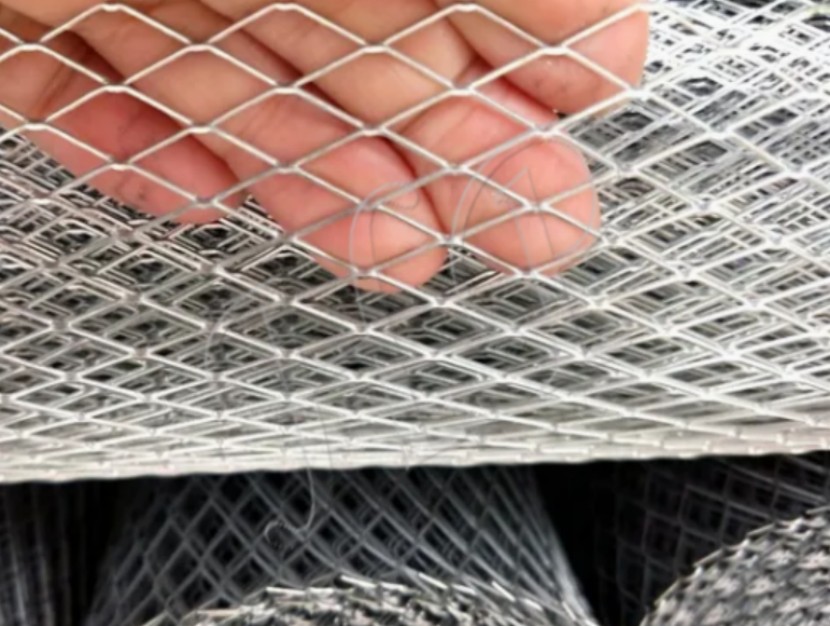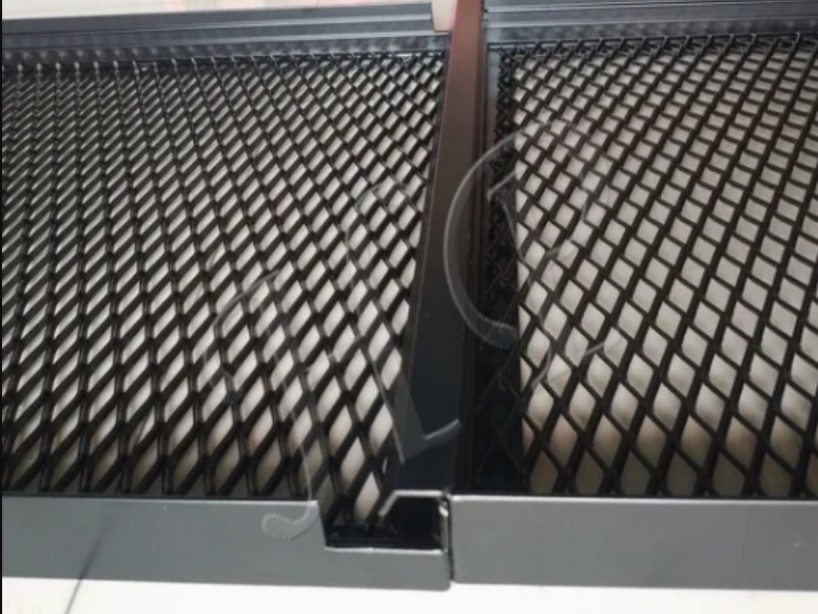Of all the materials in the industrial and architectural world, few are as deceptively simple and incredibly versatile as the humble expanded metal sheet. You’ve probably walked past it a thousand times without a second thought—the grating on a factory floor, the decorative screen on a modern building, the sturdy guard on a piece of heavy machinery. And when we talk about the workhorse of this family, we’re talking about the 4×8 expanded metal sheet. This isn’t just a random piece of metal, it’s a blank canvas for fabrication, a skeleton for structures, and a filter for processes. But here’s the kicker: not all 4×8 expanded metal sheets are created equal. Walking into a supplier and just asking for one is like walking into a car dealership and just asking for “a car.” You might get something, but will it be the right fit for your monster truck needs or your smart city commute? The journey to selecting the perfect sheet is a deep dive into a world of gauges, patterns, and materials, and it all starts with understanding that this simple-looking mesh is anything but.
Let’s get one thing straight from the get-go: the “4×8” isn’t some mysterious code. It simply refers to the size of the sheet itself—4 feet by 8 feet. It’s the standard panel size, the building block that fits perfectly onto standard pallets, trucks, and into fabrication shops. But within that uniform rectangular boundary lies an infinite variety of possibilities. The magic of an expanded metal sheet 4×8 is that it starts its life as a single, solid sheet of metal. No welding, no weaving. It’s slit and stretched in one continuous, mesmerizing mechanical process, transforming a solid plane into a strong, open mesh. This fundamental process is what gives it its inherent strength and rigidity. You’re not losing material, you’re redistributing it, creating a structure that is often stronger pound-for-pound than the original solid sheet. So, when you’re considering a project, the first mental image shouldn’t just be “a mesh.” It should be a precisely engineered component, born from a 4×8 footprint, ready to be shaped for your specific, demanding world.
Decoding the Lingo: Strands, Bonds, and the Shape of Things
Alright, let’s pop the hood and look at the engine. To choose the right 4×8 expanded metal sheet, you need to speak the language. This isn’t about showing off, it’s about making sure you get exactly what you’re picturing. The first thing you’ll encounter is the pattern, and it’s described by a few key terms. You’ve got the strand. This is the solid, metal part of the mesh—the “bones” of the pattern. The width and thickness of these strands are absolutely critical. Then you have the bond. This is the part where the strands connect—the “joints.” The distance from the center of one bond to the center of the next is the long way of the diamond (LWD) and the short way of the diamond (SWD). These measurements define the size of the openings.
Now, here’s where it gets interesting. You have two main profile types: standard and flattened. A standard expanded metal sheet 4×8 is the raw, “as-expanded” form. It has a distinctive three-dimensional texture. The strands are set at an angle, creating a surface that’s naturally skid-resistant. This is your go-to for walkways, ramps, and any floor surface where safety is paramount. It’s rugged, it’s tough, and it doesn’t pretend to be anything else. Then you have the flattened version. After the expanding process, this sheet is sent through a cold-roll press that squishes it, well, flat. The result is a smooth, two-dimensional surface that’s much easier to work with for certain applications. Think about decorative panels, screens, or anything that needs to be painted or coated evenly. A flattened expanded metal sheet 4×8 offers a more uniform appearance and is easier to clean, but you do sacrifice a bit of that inherent skid-resistance. Choosing between standard and flattened is your first major fork in the road. Do you need function and grip, or a sleek, finished look? The answer will dictate your entire path forward.
The Material World: It’s Not Just “Metal”
This is perhaps the most critical decision point. The material of your 4×8 expanded metal sheet dictates its personality, its lifespan, and its ultimate cost. Getting this wrong can turn a brilliant project into a rusty, crumbling mess in no time. Let’s break down the usual suspects. First up, carbon steel. This is the tough guy, the economical workhorse. A carbon steel expanded metal sheet 4×8 is strong, durable, and perfect for a huge range of industrial applications where corrosion isn’t the primary concern. Think machine guards, fencing, shelving, and storage racks in controlled environments. It’s often the most cost-effective option, but remember, it will rust if exposed to moisture unless it’s protected with a coating like paint or galvanization.
Ah, galvanized steel. This is carbon steel with a superpower. It’s been coated in a layer of zinc, either through hot-dipping or electro-galvanizing, which acts as a sacrificial barrier against corrosion. A galvanized expanded metal sheet 4×8 is your best friend for outdoor applications or in mildly corrosive environments. Gutters, outdoor enclosures, agricultural equipment—this is where it shines. The zinc coating gives it that characteristic spangled, crystalline look and adds years, often decades, to its life. Then we have the aristocrat of the metal world: stainless steel. When you need uncompromising corrosion resistance and a touch of aesthetic class, this is your material. An expanded metal sheet 4×8 made from stainless steel, particularly the common 304 or the more corrosion-resistant 316 grades, is what you find in food processing plants, chemical facilities, marine environments, and high-end architectural features. It’s strong, it’s hygienic, it’s easy to clean, and it maintains its appearance beautifully over time. It comes at a premium price, but for the right application, it’s worth every penny. And let’s not forget aluminum. Lightweight, naturally corrosion-resistant, and non-magnetic, an aluminum expanded metal sheet 4×8 is ideal for applications where weight is a critical factor, like in aerospace, certain types of filtration, or decorative pieces where its natural silver finish is desirable. Each material tells a different story. Are you building a rugged industrial platform or a delicate architectural screen for a seaside villa? The material of your 4×8 expanded metal sheet is the voice that tells that story.
The Gauge of the Matter: Thickness and Strength
Now, let’s talk about heft. The thickness, or gauge, of the metal before it’s expanded is a huge determinant of the final product’s strength and rigidity. This is where you separate the light-duty screens from the heavy-duty load-bearing platforms. The gauge system can be a bit confusing because it runs backwards—a lower gauge number means a thicker sheet. So, a 10-gauge expanded metal sheet 4×8 is substantially thicker and stronger than a 20-gauge one. But it’s not just about the gauge number itself. You also need to consider the strand width. A sheet can have a relatively thin gauge but very wide strands, making it quite strong in one direction, or it can have a thicker gauge with narrow strands, creating a denser mesh.

Thinking about your application is everything here. If you’re selecting an expanded metal sheet 4×8 for a catwalk or a mezzanine floor, you’re going to be looking at a heavier gauge—perhaps 3/4″ or even 1/2″, in a gauge of 10 or 13. This combination ensures it can handle foot traffic and live loads without flexing or failing. Conversely, if you’re making a decorative radiator cover or a light filtration screen, a 20-gauge or even 22-gauge expanded metal sheet 4×8 would be perfectly adequate. It’s lightweight, easy to cut and form, and much more cost-effective. The key is to not over-spec and pay for strength you don’t need, but to absolutely never under-spec and create a safety hazard. Consulting load tables from manufacturers or suppliers is not just a good idea, it’s essential for any structural application. The right gauge for your 4×8 expanded metal sheet is the silent promise of safety and durability.
The Opening Act: How Much Space Do You Really Need?
The size of the holes, or the open area, in your mesh is a functional and aesthetic choice that has massive implications. This is defined by the LWD and SWD measurements we talked about earlier. A mesh with a large open area, say 2″ LWD x 1″ SWD, will be very open, allowing for maximum airflow, light passage, and visibility. This kind of expanded metal sheet 4×8 is perfect for applications like ventilation grilles, speaker covers, or security screens where you want to see through them. It uses less material, so it’s often lighter and less expensive.
On the other end of the spectrum, you have a very small opening, like a 1/4″ LWD x 3/16″ SWD. This creates a much denser, more solid-looking panel. The open area is minimal. This type of expanded metal sheet 4×8 is excellent for applications where you need to contain smaller objects, provide a higher level of security, or create a specific visual effect where light filters through in a dappled pattern. Think about machine guards to keep out small tools, filters for larger particles, or architectural screens that provide more privacy. The open area percentage is a number you can get from suppliers—it tells you exactly how much of the sheet is “hole” versus “metal.” Balancing the need for transparency, airflow, containment, and aesthetics is what the opening selection is all about. Your perfect 4×8 expanded metal sheet might be one that offers just the right amount of peek-a-boo for your project’s unique personality.
The Finishing Touch: From Raw to Refined
You’ve picked your pattern, your material, your gauge, and your opening. You’re almost there, but the journey isn’t over until you consider the finish. An expanded metal sheet 4×8 doesn’t have to be used in its raw, mill-state condition. The finish is what integrates it into its final environment and ensures its longevity. For carbon steel, a simple paint job might be sufficient for indoor, dry applications. But for anything more demanding, you need a more robust solution. We already mentioned galvanization, which is a finish in itself. But you can also powder coat an expanded metal sheet. This involves applying a dry powder electrostatically and then curing it under heat to create a hard, durable, and often colorful coating. Powder coating is available in a vast array of colors, making it perfect for architectural and design-focused projects where you want a specific hue—maybe a black expanded metal sheet 4×8 for a modern gate or a corporate blue for an interior partition.
For stainless steel and aluminum, you might consider a brushed or polished finish to achieve a specific luster. Or, for a truly rugged, industrial look that also adds corrosion protection, you could opt for a black oxide coating. Sometimes, the finish is about more than just looks, it’s about preparation for further fabrication. A flattened and descaled expanded metal sheet 4×8 provides a perfectly smooth surface for welding or other joining processes without any high spots from the expanding process. Don’t let your perfect sheet be let down by a poor or non-existent finish. This final step is what transforms a generic industrial product into a tailored component made specifically for you.
Putting It All Together: Your Project, Your Sheet
So, how does this all come together in the real world? Let’s walk through a few hypotheticals. Imagine you’re building a security screen for a ground-floor window. You need strength and small openings to prevent entry. You’d likely choose a carbon steel, flattened expanded metal sheet 4×8 in a medium gauge (like 13 or 16) with a small SWD. You’d then have it galvanized or powder-coated black for weather resistance and a finished look. Now, picture a factory manager needing a new safety guard for a large, spinning machine part. The priority is extreme strength and visibility so operators can still see the machine. A standard (unflattened) carbon steel expanded metal sheet 4×8 in a heavy gauge (like 3/4″ or 1/2″) with a large opening would be ideal. The standard profile provides a grippy surface for maintenance workers, and the heavy gauge can withstand any accidental impacts.
What about a high-end restaurant wanting a decorative room divider? Aesthetics are king here. They might select a flattened stainless steel expanded metal sheet 4×8 in a light gauge with a custom diamond pattern or even a decorative pattern. It could be left in its natural, polished state for a sleek, modern look. Or, an engineer designing a platform for a water treatment plant needs something that can withstand constant moisture and chemical exposure. Their only real choice is a 316 stainless steel expanded metal sheet 4×8 in a standard profile for slip resistance and a gauge heavy enough to support the expected load. In every single case, the process is the same: define the need, and let that need guide you through the maze of material, gauge, profile, and opening. The perfect 4×8 expanded metal sheet for your specific need is out there, waiting in a 4×8 panel, ready to be transformed. It’s not just a purchase, it’s a selection of a key player for your project’s team. Choose wisely, and that sheet will perform for years, a silent, sturdy testament to your good judgment.





